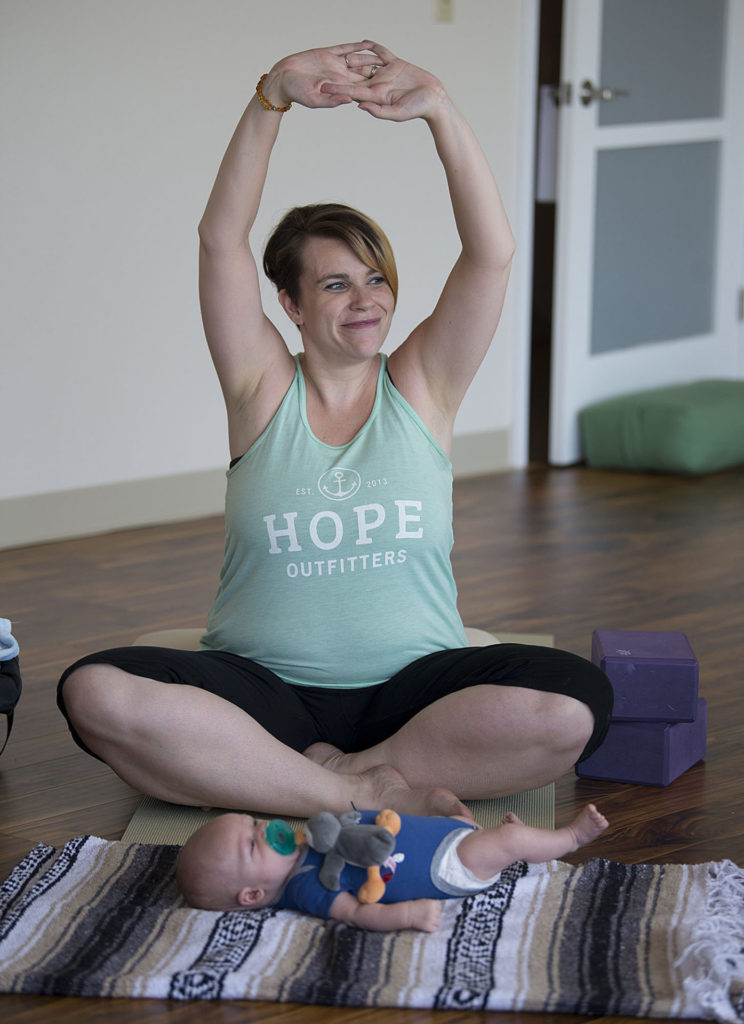Women Are Having Fewer Babies Because They Have More Choices
Written by Jill Filipovic | Published: September 13, 2021
Originally published by The New York Times on June 27, 2021

American women are having fewer children and having them later than ever before—a demographic shift being met with significant consternation from the left and right alike.
For conservatives, the fact that more women are putting off parenthood or forgoing it entirely is evidence of a dangerous decline in traditional family values. In this framing, women have been manipulated into putting their educational and professional aspirations ahead of motherhood, contributing to a broader cultural breakdown.
Liberals make the (better) case that birth declines are clearly tied to policy, with potential mothers deterred by the lack of affordable childcare and the absence of universal health care, adequate paid parental leave, and other basic support systems. Couple that with skyrocketing housing prices, high rates of student loan debt, and stagnant wages and it’s no surprise that so many women say: “Children? In this economy?”
Either way, the baby bust, if that’s what it is, is cast negatively. Both liberals and conservatives point to shifting demographic trends as a kind of failure: of the family, of women, and of a culture compromised by feminist ambition; or of the state, of capitalism, and of our family-unfriendly workplaces that fuel a culture of overwork.
But what if lower birth rates are a good thing? For a great many individual women, reconsidering motherhood doesn’t reflect hardship or unmet desire, but rather a new landscape of opportunity. As a country, we would be better off if we saw significant demographic changes as data points that can give us important clues about what people want, what they need, and how we might improve their lives.
Birth rates are declining among women in their 20s, ticking up slightly among women in their 30s and 40s, and, as a New York Times analysis found, decreasing the most significantly in counties where employment is growing. In other words, the women who are driving this downturn are those who have the most advantage and the greatest range of choices, and whose prospects look brightest.
Further, while birth rates are dropping, the total percentage of women who are mothers has risen, in part thanks to older women, college-educated women, and unmarried women being more likely to have a baby than they had been. Childbearing remains overwhelmingly the norm: 86 percent of American women ages 40 to 44 are mothers. Motherhood isn’t on the decline so much as motherhood is delayed, and families with one or two children are ascendant.
Thanks to feminist cultural shifts, and better access to contraceptives, more women now approach childbearing the same way we approach other major life decisions: as a choice weighed against other desires, assessed in context. Without compulsory childbearing, this assessment continues throughout women’s childbearing years. The 24-year-old who says she wants children someday but is focusing on her career can easily turn into the 30-year-old who says she wants children but with the right partner. Later, she can easily become the 45-year-old who has a meaningful career, a community of people she feels connected to, and a life rich in pleasure and novelty that she doesn’t want to surrender. Likewise, a mother sold in theory on three children might discover her family is complete with two, or one. Is that a woman who had fewer children than she intended? Or is she someone whose intentions were largely abstract in the first place, and they shifted as she did?
Many women are surely not having as many children as they want, and policymakers should pay attention to that: Many of those women might make different decisions if they had better support. But the hard binary of childfree vs. definitely wanting children doesn’t adequately capture the push-pull decision-making process that characterizes the lives of many American women.
It is still revolutionary to consider childbearing in the context of desire. Throughout human history, parenting was simply an assumed part of adult life.
But intentionality matters. Women who plan their pregnancies wind up happier, better educated, and with less relationship conflict than women whose pregnancies are unintended, according to studies compiled by the Guttmacher Institute. The Institute for Family Studies found that women who have more children than their ideal are less likely to report feeling happy than women who had their ideal number and than women who had fewer children than they said they wanted.
Women the world over are having fewer children and having them later. And countries where women have the most opportunity to pursue higher education, live independently, and work for pay also tend to have a higher average age of first birth and lower birth rates overall. Despite the broad lack of social support systems in the United States, the average American woman has her first child at 26.4, a younger age than the average woman in any other developed nation.

At the heart of declining birth rates in the world’s most prosperous countries might be the matter of meaning. Historically, men dominated the realms of paid work, politics, economics, and world affairs, while motherhood was the clearest and most acceptable path to adulthood, community respect, and purpose for women. As more women either find jobs that bring in a paycheck and the attendant power of independence, or maybe even a sense of satisfaction and purpose, fewer women use motherhood as a conduit to respect and adulthood. This makes parenthood better, too: Women lucky enough to have a choice see parenthood as its own distinct path, and intentionally walking down it brings unique life experience, deep meaning, expanded potential, and a relationship unlike any other—and also trades some opportunities for others.
Of course these choices are not all free, or always “choices” at all. The United States remains a wildly unequal place, and that affects women’s reproductive choices. Women who want to balance career, life, and their own future may be less likely to have a baby (or a second or a third) with a man who doesn’t pull his own weight. And many American women are still unable to find easy access to family planning tools, including contraception and abortion.
But there are also fewer constraints on American women today than at any point in U.S. history, and many more options. The United States is also now a place where huge numbers of women of childbearing age live in dynamic communities where those their age are staying single and delaying motherhood longer than ever. Growing numbers of young women have opportunities to travel, live independently, pursue a career, and simply spend many more years of their adult lives asking themselves who they are and what they want, instead of being slotted, early, into a narrow set of gendered expectations.
To be sure, for some women choosing to wait to have children, choosing to have fewer, or not have them at all, is linked to a failure of the state. But for many others, it’s a sign of a more flexible and open society, populated by women who feel surer of themselves to pursue the unconventional.
Concerns about the economic impacts of lower birth rates are valid, but also shortsighted—especially given that an ever-expanding global population of wealthier people living longer is simply unsustainable. One short-term solution to an aging population is immigration. Longer-term answers come down to finding more creative ways to fund social welfare programs than dependence on unlimited population growth and placing the burden on women to create a generation of workers.
Maybe the truth is that, given a wider range of options for finding love, respect, and a full life, women will choose many different paths of which motherhood or mothering a large brood are but two. Maybe the choices made by some of the luckiest and best-resourced women in the world shouldn’t scare us, but should inform us that when women have more options and opportunities, women’s desires become far more varied.
We should spend less time worrying about birth rates, and more time developing policies to support families of all kinds—because it’s simply the right thing to do. We should couple that with an intentional shift in culture that doesn’t require women to cede so much of themselves (and give up so much of their potential and so many of their other wants) when they have children. That might not result in a baby boom, but it would serve a more worthy goal: healthier families and happier citizens, each a little freer to decide for themselves what makes a good life.

